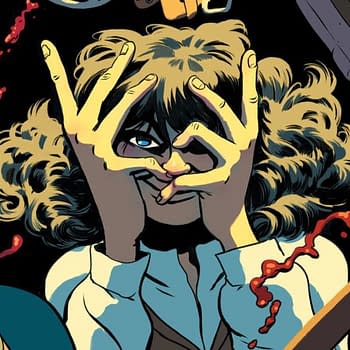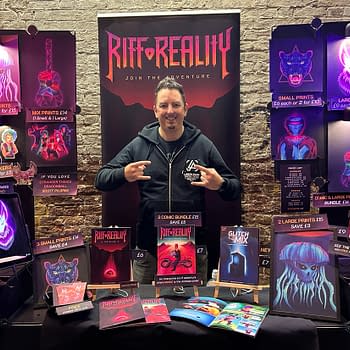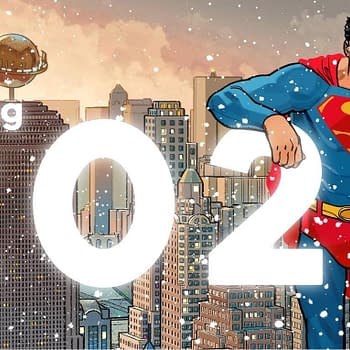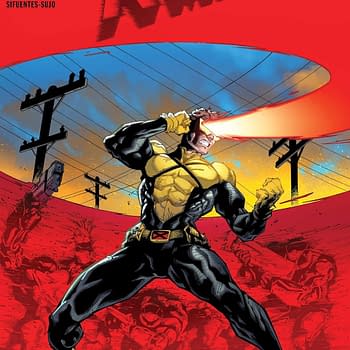Posted in: Comics, Digital | Tagged: Justin Jordan, kickstarter, urban animal, Webtoon, webtoons
Justin Jordan's Urban Animal Comic Read By 100,000 A Week on WebToon
Justin Jordan's Urban Animal comic is read by up to 100,000 a week on Webtoon. But how does he make the whole thing pay?
Comic book creator Justin Jordan writes about his big new comic that's already being read by 100,000 people a week and has been for over a year. Never years of it? Time to catch up with Urban Animal:
I'm Justin Jordan, and I write comics. Lots of them. I wrote Curse of Brimstone, Sideways, New Guardians, Superboy, and Team 7 at DC. I rebooted Shadowman for Valiant. Right now, I'm doing Reaver and Dead Body Road over at Skybound/Image. I've worked for kind of everyone, but I'm probably best known for the Luther Strode series and Spread at Image.
Best known in the direct market, I make that distinction because far and away, my most popular and most-read comic isn't in the direct market at all. Yet, anyway. My actual most popular thing is Urban Animal over at Webtoon, which you can read here:
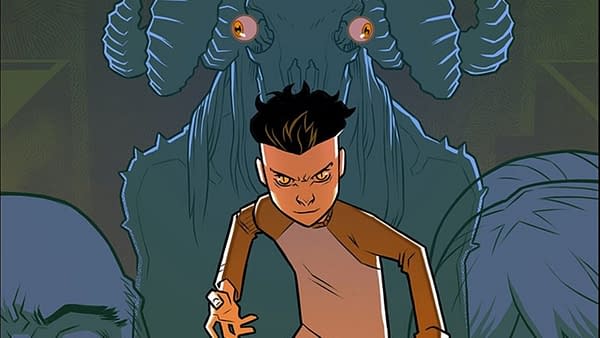
I'm in a somewhat unique position because I've done a lot of creator-owned, a lot of work for hire, a lot of work in the direct market, and a fair amount of work outside of it. I'm not the only person who's done all that, but there's not many of us, and it gives me a chance to talk about how all that compares to each other.
I have a bad habit of saying 'comics' when what I am actually talking about is 'direct market comics.' We talk about comics being in trouble based on what's happening in the direct market. But while the direct market has its ups and downs, comics, sequential storytelling, is enormously popular.
Dav Pilkey's Dogman has a FIVE MILLION copy print run for the latest. In a given year, Pilkey alone sells millions of trades. He's the top dog, as it were, but there's plenty of others who have numbers that would be staggering in the direct market.
Likewise, manga fairly routinely sells tens of thousands of copies of a given volume in the US. And then there's the really big readership, which is webcomics generally, and Webtoons specifically, which are staggeringly large. How large?
Well, Urban Animal, the series I do there with John Amor and Micah Myers, has, as I write this, 465,000 subscribers. That's not an error or an extra zero or two. We're at close to half a million subs, which I still have trouble wrapping my head around.
And by Webtoons standards, we're basically middle of the pack. Let's Play, for instance, has 3.7 million subscribers. Either of those numbers is a whole lot of people who've not only seen the series but have liked it enough to hit subscribe. I don't actually know how many people have actually looked at Urban Animal, but it's somewhere in the millions.
But of course, subscribers aren't readers. For Urban Animal, we seem to cruise along at somewhere between 80 and 100,000 readers a week. I don't actually ask all that often, and there's also only so much I can publicly talk about.
Of that number, about 10K will give an episode a like when it comes out. The numbers increase over time because there's churn. New readers come in, old ones drop off, although our overall numbers are still trending upwards. Subscribers, reader, and likes are all awesome, but it's not a direct comparison to the top 300 in direct market comics, because it's free.
Still, this is almost certainly more readers than anything else I've done. That's a hard number to quantify, because there are also things like piracy for print comics, not to mention digital editions that aren't publicly available.
With the apples to oranges caveat, our weekly readership is at least in the range of the top ten print comics in any given month. So if buyers are readers, we're doing big numbers by direct market standards. I am still a little iffy, whether that's a fair comparison, but we do want to know.
Urban Animal is free to read, which is the big confounding variable, but there IS a paid component. On Webtoons, you can read episodes early with a program called Fast Pass. You pay, essentially, 50 cents to read an episode early, and there are usually three episodes available beyond what's free to the public.
I can't talk publicly about the amount of money that brings in, but I can say that the minimum number of paying people, based on what we do make from Fast Pass and our split with Webtoons, is 4,000 people a week. That's not great sales if it were a direct market book, but for a thing, people can get for free? Not bad.
That number is also the minimum. How much we make from Fast Pass use is partly dependent on how people are making that purchase, so the number is almost certainly higher. And it's also hard to gauge how many people come and go from that.
Basically, if you work out all the income we as yet have coming in from Webtoons, my part of that is usually almost identical to what I'd get paid to write a comic for DC for the same amount of content. It's considerably more than I'd make from many of my creator-owned books, at least on a per-issue basis.
As a business model, this is interesting. Urban Animal is a feature comic at Webtoon, which means they pay us a license fee per episode, plus we get a split of the ad revenue as well as Fast Pass. It ALSO means we get promotional support we would not get if we were going in through their canvas system.
But a crucial feature, for me, is that this is indeed a license. Normally when you're doing creator-owned comics in the direct market, if you're being paid, the publisher is essentially getting at least part-ownership of the property. There are exceptions, but it's generally true.
This, though, functions more like how you would sell a short story in the prose market. We're getting a license fee that gives them exclusive rights to it for a certain period of time, and then we can do whatever we want with it. Some of that is actually immediate – we've done merch since the start.
So from a business standpoint, it's a pretty good deal. It makes it hard to say how financially profitable it is because the time horizon is fairly long. Urban Animal is in season three right now. The end of that season will put us at roughly 30 standard-sized direct market single issues worth of content. This means that the sheer volume and length of it means I will probably eventually make more money from this than from any other series I've done.
The other part of that calculation is exploiting the rights, which I mostly haven't done. So, for instance, we are now coming up on being able to do a print edition of the first season, which we are, and, let's be honest, is why I am writing this article, to begin with. Gotta do the hustle.
For the print edition, we've teamed up with Rocketship Entertainment, which has done the print editions of seven other Webtoon series, including the monster that is Let's Play. Part of the reason we went with them instead of trying to get it out through, say, Image or another primarily direct market publisher is time. Reformatting it for print is something I am not technically capable enough to do, and John is too busy, you know, actually drawing the comic to do.
Kickstarter is also new territory for me. While I've had work IN Kickstarters, this is the first time I'm directly involved with the campaign itself. I suspect crowdfunding is going to take an increasingly prominent place in direct market comics, especially if Scott Snyder and Keanu Freaking Reeves are anything to go by.
The Urban Animal print edition will also be available through the direct market and in the bookstore market down the road. We're collecting the entire first season, which works out to somewhere over two hundred pages, so it's a meaty beast of the actual story.
It's also, and I realize I wrote it, damn good. I think it's one of the best things I've done, and there's no risk to you to swing over to Webtoons to check it out. And aside from creative quality, I can say that the hyperserialized Webtoons format has been super fun to actually write in.
Urban Animal – Every Saturday on Webtoon. By Justin Jordan, John Amor and Micah Myers
Meet Joe Gomez. He's got high school on lock – good grades, a cool band, and girls digging his vibe. But just when he's got the world figured out, he goes and turns into a saber-toothed tiger. A shape-shifting nature spirit known as a Chimera, to be specific. Now Joe needs every single one of his new powers to help save the human race – whether he wants to or not.







